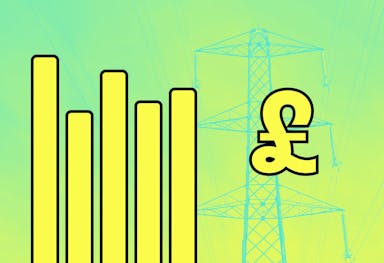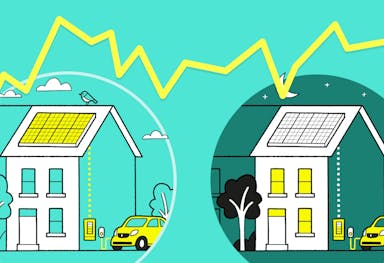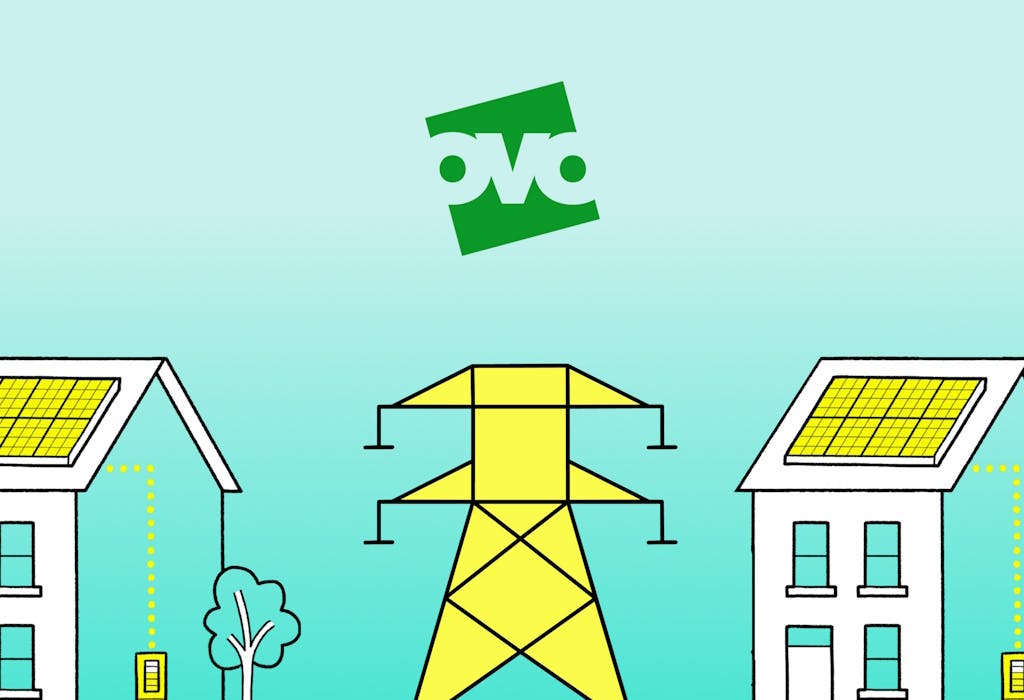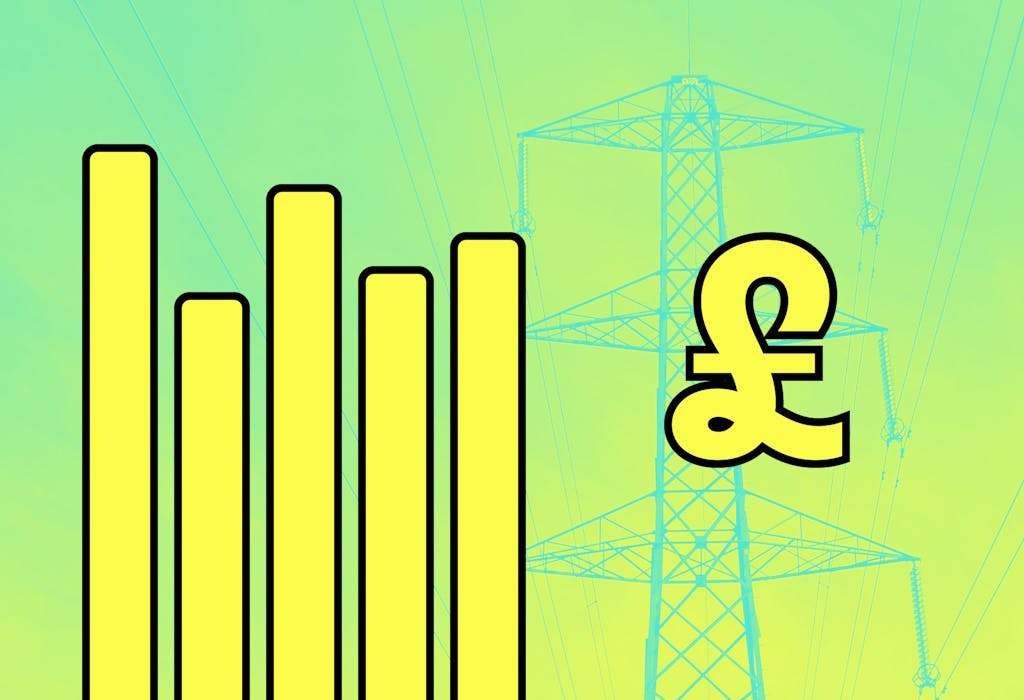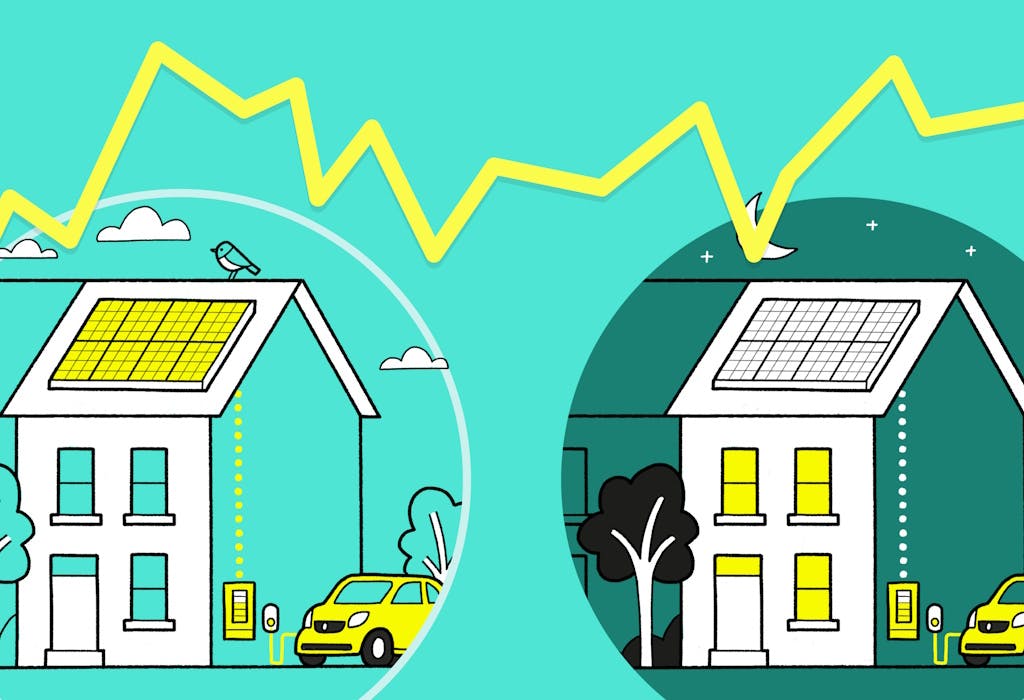- Solar advice hub
- Exporting-to-the-grid
- EDF’s export tariff: is it worth it?
EDF’s export tariff: is it worth it?
Here are all the pros and cons of EDF’s four export tariffs, including their rates, how you can qualify, and which import tariffs they combine best with.


Why you can trust our content
We know that the solar industry is full of misinformation, but we only use reliable sources, including:
- Our experienced solar experts, installers and system designers
- Our own database of solar & battery system designs
- Authoritative bodies like MCS and the UK government



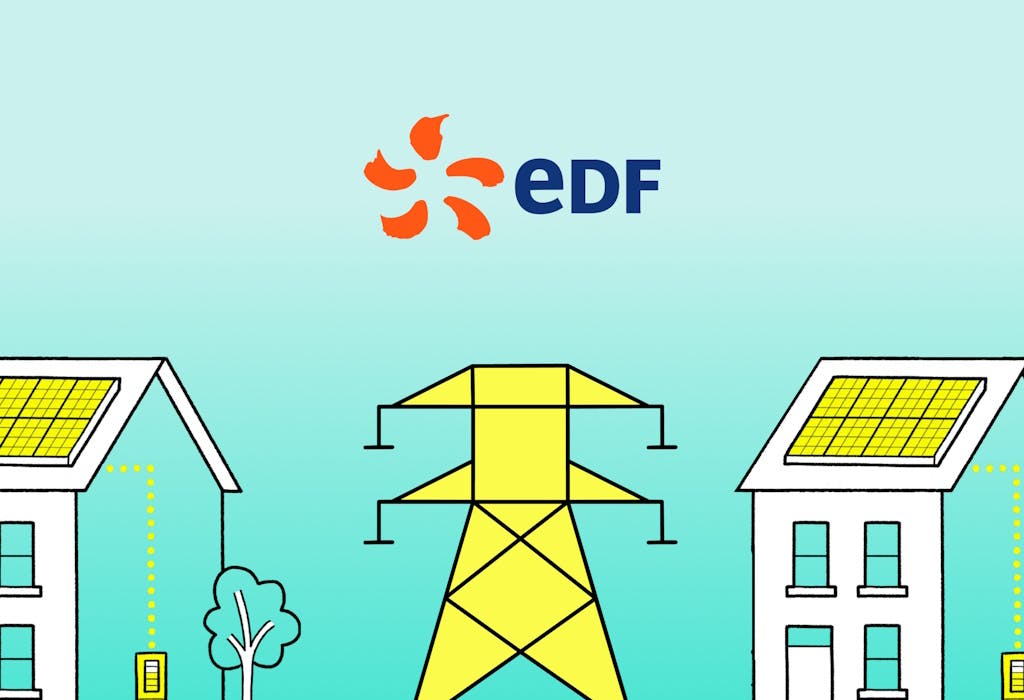
Calculate savings
What kind of home do you live in?
Calculate savings
What kind of home do you live in?
EDF’s export tariffs: at a glance
If you own a solar panel system, it’s worth looking at the latest export tariffs every few months, to check you’re making the most of your setup – and EDF has some of the best rates.
The supplier, which has about 5.5 million UK customers, offers a wide choice of export tariffs, including one of the very highest rates available to solar homes.
In this guide, we’ll go through all the attributes and various pros and cons of EDF’s four export tariffs, including their rates, which households are eligible, and how you can sign up – plus which import rates combine best with each one.
And if you’re wondering how much you could save with a solar & battery system, enter a few details below and we’ll provide an estimate.
Find out how much you can save
What kind of home do you live in?
What export tariffs does EDF offer?
EDF offers four export tariffs: Export Exclusive 12m V2, Export 12m, SEG Export Variable Value, and SEG Export Variable.
Like most of the biggest energy suppliers, EDF provides a selection of export tariffs, with higher rates for households that choose them as their solar installer or electricity provider.
The French company also offers a tariff that meets the criteria of the Smart Export Guarantee, a UK government scheme that forces large suppliers to pay homes with a renewable system for all their exported electricity.
| Name of EDF tariff | Export rate (p/kWh*) |
|---|---|
| Export Exclusive 12m V2 | 24 |
| Export 12m | 15 |
| SEG Export Variable Value | 5.6 |
| SEG Export Variable | 3 |
1. SEG Export Variable
Export rate: 3p/kWh
EDF’s most no-strings export tariff allows solar homes to be paid for their exports, no matter who installed their system or supplies their grid electricity.
Ever since EDF increased this tariff’s rate from 1.5p to 3p per kWh in March 2023, it’s remained stable among a world of changing export prices.
That isn’t good though, since Ofgem’s latest report puts the average export rate at 8.9p per kWh – nearly three times higher than this tariff.
Households can boost their export income further by signing up to a ‘bundled’ option, which involves getting either your installation or electricity from the same company.
For more details, check out our guide to the best export tariffs, which goes through the best import-export tariff pairings and calculates how much you could save on your bills.
Which import tariff should you use?
You should use Good Energy EV Charge with SEG Export Variable.
With no requirement to sign up for an EDF import rate, you can pick the best option around, which is this time-of-use tariff.
Whether or not you have an EV, you can take advantage of this tariff’s daily 12am-5am off-peak period, when electricity costs about four times less than the energy price cap.
The peak rate, which is in effect at all other times, is a bit higher than the price cap.
However, if you charge your battery overnight on cheap electricity, then rely on your solar & battery system during the day, you can save plenty of money on your energy bills.
What are the eligibility requirements?
If you get a solar panel system installed by a company that’s certified by MCS or Flexi-Orb, you should be able to sign up for SEG Export Variable.
Your installation’s capacity also can’t be larger than five megawatts (MW), but considering the average UK system is around 1,000 times smaller than that, you should be fine.
You’re free to choose any electricity supplier with this tariff.

2. SEG Export Variable Value
Export rate: 5.6p/kWh
Just like its 3p per kWh counterpart, SEG Export Variable Value is a variable tariff that lets you choose your installer, and decide for yourself whether you want a battery or not.
However, the big difference is that you must receive your grid electricity from EDF to qualify.
This limitation means your household’s solar returns may be lower on this tariff than they would be on a tariff like SEG Export Variable, which allows you to use any import supplier.
It’s also not clear why you’d sign up for this tariff instead of Export 12m, which pays 15p per kWh and comes with more or less the same requirements – but we’ll explore that question below.
Which import tariff should you use?
You must use an EDF import tariff to sign up to SEG Export Variable Value.
As of the October 2025 price cap, your best option is EDF Simply Fixed Oct26v13, which charges about 27.48p per kWh, with a 34.08p daily standing charge.
These prices will differ, depending on where in the country you are.
What are the eligibility requirements?
To qualify for SEG Export Variable Value, you simply have to own a solar panel system that doesn’t exceed 5MW, and get your electricity from EDF.
If you switch suppliers during your contract, you’ll be automatically shifted onto SEG Export Variable, and start receiving 3p per kWh instead.
However, like all export tariffs, you can leave at any time without incurring an exit fee.
And if you’re wondering how much you could save with a solar & battery system, enter a few details below and we’ll provide an estimate.
Find out how much you can save
What kind of home do you live in?
3. Export 12m
Export rate: 15p/kWh
This is EDF’s fixed tariff for solar homes that are willing to get their grid electricity from the supplier, and is one of top export tariffs in the UK.
You don’t have to get anything installed through EDF to qualify, and you’ll be paid nearly three times more than you would be on SEG Export Variable Value’s 5.6p per kWh rate.
Export 12m’s rate isn’t variable, so it won’t change if the energy price cap rises, but it’s still likely to remain EDF’s most generous tariff with no installer limitations.
If you already have a solar panel system, or if you’d rather choose a different installer, this is the EDF’s best export tariff for you.
Which import tariff should you use?
As you have to use an EDF import tariff to sign up to Export 12m, your best option during the October 2025 price cap is once again EDF Simply Fixed Oct26v13.
Its 27.48p per kWh unit rate is higher than the price cap, but it makes up for this with a particularly low standing charge of 34.08p per day.
These prices will change depending on your home’s location, but that standing charge is 37% lower than the price cap, which is extremely generous.
What are the eligibility requirements?
As well as receiving grid electricity from EDF, your solar panel system can’t be larger than 50kWp.
That’s about 10 times bigger than the national 4.6kWp average, and isn’t unthinkable for some large properties – but most households won’t have to worry about this restriction.
If you switch import tariff suppliers at any point during your 12-month contract, you’ll be moved onto SEG Export Variable and its 3p per kWh rate.
4. Export Exclusive 12m V2
Export rate: 24p/kWh
This is one of the highest export rates on the market, second only to Good Energy’s 25p per kWh Solar Savings Exclusive tariff.
Because of this, it understandably comes with the most restrictions of any EDF tariff.
As well as getting your electricity from EDF, you must have solar panels or a battery installed by the company’s subsidiary, Contact Solar.
It’s therefore only available to households that don’t yet have both solar panels and a battery, or happen to have gone solar through EDF since April 2025.
This means it’s pointless to get quotes from other installers, which is the standard way of ensuring you secure the best price possible.
You’ll also have to stick with EDF for your import tariff – though fortunately, there’s a special option for Export Exclusive 12m V2 customers.
Which import tariff should you use?
You should sign up to Empower Tracker Exclusive 12m, which is only open to households on this export tariff.
This will get you zero standing charges for 12 months, saving you around £200.
Otherwise, it’s a time-of-use tariff with a 1am-4am off-peak period – when electricity costs 10p per kWh less – and a 4pm-7pm peak period, when you’ll pay 10p per kWh more.
You can save money by charging your battery with low-cost electricity overnight, then using or exporting it during the day.
The tariff tracks the price cap, so your rates will change every three months.
What are the eligibility requirements?
You must get solar panels or a battery installed through EDF, and be signed up to an EDF import tariff.
So if you already have solar panels but not a battery, you can qualify for Export Exclusive 12m V2 by getting a battery fitted through EDF.
There’s a 50kWp limit on your solar panel system’s size, though this shouldn’t be an issue for most households.
How much can you earn from EDF’s export tariffs?
Your potential earnings from EDF’s export tariffs depend on several factors, such as which tariff you choose, how large your system is, and how much electricity you’re able to export.
| Name of EDF tariff | Average annual export income* |
|---|---|
| Export Exclusive 12m V2 | £549 |
| Export 12m | £179 |
| SEG Export Variable Value | £67 |
| SEG Export Variable | £69 |
Export Exclusive 12m V2 is far and away the top EDF export tariff.
Its 24p per kWh rate is among the best on the market – it’s 207% better than Export 12m, and around 700% higher than SEG Export Variable Value and SEG Export Variable.
It also comes with an import tariff that provides homes with a year off from standing charges, as well as a decent off-peak period every day.
You’ll face multiple restrictions if you go with Export Exclusive 12m V2, though.
You’ll have to install either solar panels or a battery through EDF, so if you already have both of those products, you won’t be eligible. Even if you don’t, your installer options – just like your choice of import tariff supplier – will be limited to one.
And though Export Exclusive 12m V2 is one of the better import tariffs around, it’s less appealing after 12 months, when you have to start paying a standing charge again.
If you don’t want to install through EDF, but you don’t mind getting your electricity from them, Export 12m – with its 15p per kWh rate – is your best option.
SEG Export Variable Value isn’t nearly as good, to the extent that it’ll earn the average household less than SEG Export Variable, despite offering an export rate that’s nearly two times better.
This is because it obliges solar homes to use an EDF import tariff, which means they can’t use a more profitable time-of-use tariff.
With one of these tariffs – like Good Energy EV Charge – it makes financial sense for a household to export more of its solar electricity, instead of using it at home, which boosts the home’s overall returns.
How can you sign up for an EDF export tariff?
You’ll have to fill in an application form, which you can get online or by emailing hello@edfenergy.com.
To complete this form, you’ll need your bank details, your installation’s Flexi-Orb or MCS certificate, and your Meter Point Administration Number (MPAN), which is a 13-digit code unique to your electricity meter that you can find online.
After you hit submit, EDF will ask your DNO for your export MPAN. Once this is registered, you should begin receiving payments, though EDF will also request a smart meter reading from you to make sure the process is running smoothly.
How long does it take?
EDF doesn’t give any sort of timeframe, saying: “As this is a process that includes third parties, we cannot guarantee how long this will take”.
You should usually expect the sign-up process for an export tariff to take between five and 12 weeks.
It should be on the lower end of this scale if your DNO has already allocated you with an export MPAN, but there are no guarantees.
It’s worth asking EDF how long it’ll take, and seeing if your payments can start as early as possible.
If necessary, you can point out that the tariff is meant to start as soon as your export MPAN is registered with EDF, according to the supplier’s own terms and conditions.
Are EDF’s export tariffs worth it?
EDF’s export tariffs are some of the best on the market, so it’s certainly worth working out whether they’re right for your home.
Its 24p per kWh rate makes Export Exclusive 12m V2 tariff superior to every other export tariff but one.
You’ll have to deal with some restrictions – including needing to choose EDF as your installer – but you don’t have to get both solar panels and a battery through EDF to qualify, which isn’t the case with some suppliers.
The supplier’s Export 12m tariff is one of the most generous among those that require customers to have the same import and export tariff supplier, but allow for any installer.
Customers with this export tariff can’t sign up to a time-of-use import rate, which is a slight drawback, but it’s still one of the better options for solar homes.
None of EDF’s export tariffs come with exit fees, which is also a positive, even if this is standard throughout the industry.
If you’re wondering how much you could save with a solar & battery system, enter a few details below and we’ll provide an estimate.
Find out how much you can save
What kind of home do you live in?
FAQs
Related articles

Written byJosh Jackman
Josh has written about the rapid rise of home solar for the past six years. His data-driven work has been featured in United Nations and World Health Organisation documents, as well as publications including The Eco Experts, Financial Times, The Independent, The Telegraph, The Times, and The Sun. Josh has also been interviewed as a renewables expert on BBC One’s Rip-Off Britain, ITV1’s Tonight show, and BBC Radio 4 and 5.

